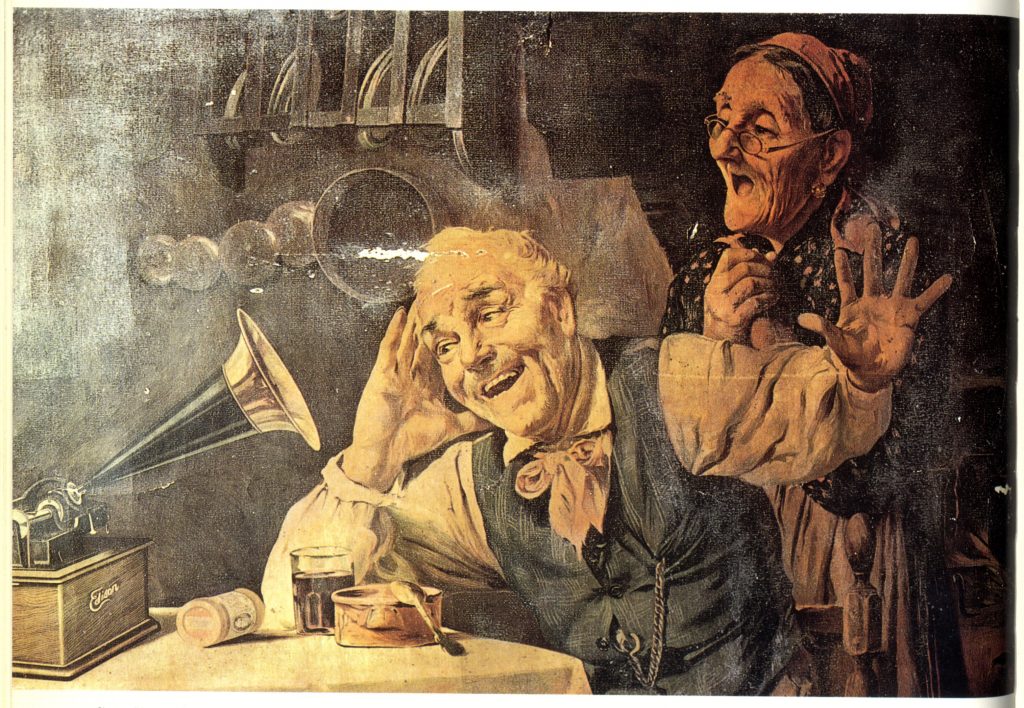“The contribution of the Kounadis Archive to the rescue and dissemination of Greek culture during the 20th century was substantial and I am glad that through the implementation of the project [of the Virtual Museum] this valuable material can be made accessible to the Greek and international community.”
The “Kounadis Archive Virtual Museum” constitutes an approach to the phonograph era and 78 rpm discography from the perspective of modern digital applications. With its research, educational and interactive character as main features, as well as its personalization, openness, dynamism and accessibility to everyone, the Virtual Museum approaches, in various ways and in different fields (through the digital multimedia presentation of a multitude of archival material with a common point of reference), music and the course of Hellenism (inside and outside of Greece) mainly in the 20th century, emphasizing on the period 1900-1960, but also with references that, due to the considerable importance of the 78 rpm, date back to older historical periods.
The digital content of the Virtual Museum, whose enrichment and development is constantly ongoing, includes more than 6,000 holdings, a representative sample from the wide range of the different categories of the archival material in the Kounadis Archive. 78 rpm records, musical scores, interviews (sound and transcripts), photographs, postcards, sound reproduction apparatuses and musical instruments form a historical and conceptual unit with music as the key component; not only as a performance, as a form of recreation, entertainment and culture, but also as a research tool, as a mirror of social developments and as a field of symbolic recording and projection of the controversies that expressed the underlying demands of each era, highlighting the processes that shaped collective consciousness and modern Greek identity.
Utilizing modern multimedia technology and virtual reality, “translating”, that is, the archival material of another historical period into the codes of the digital world that are familiar to modern man, the “Kounadis Archive Virtual Museum” seeks to highlight them, to bring them back to collective memory, to contribute to the opening of a fruitful dialogue with the past, to reflect upon them, to promote awareness and to ruminate.
Digital Collection: It constitutes the basis of the Virtual Museum, as it includes digitized exhibits from the collection of the archive: musical scores, 78 rpm records, interviews (audio and transcripts), photographs, postcards, sound reproduction apparatuses and musical instruments. It allows the user search with keywords and filters, as well as the presentation of exhibits in multiple visualization styles.
Thematic Exploration: Allows the user to browse the archive based on musical genres. The thematic collections present selected exhibits of the digital archive that represent each musical genre.
Digital Stories: Digital stories are a different method of presenting curated grouped exhibits based on interactive storytelling.
Virtual Tour: This 3D application enables the user to navigate in a virtual reality (VR) environment in an interactive way, in the building that houses the Kounadis Archive, in order to explore the premises, to peer into the objects and to find information about the collection of the archive.
Games: They comprise a number of mini-games, which are designed to offer a more amusing approach to the archive and its material. They are aimed at younger ages, but, due to the educational nature of the games, they are equally entertaining for… adult children.
Educational Portal: It comprises organized educational material and courses based on the digital material of the archive, available to teachers and students. The objective of the Educational Portal is to coach teachers on how to teach specific topics (e.g. Immigration) by providing well-structured courses with interactive material developed by the Kounadis Archive collection.

With the discovery of the phonograph, the hitherto fleeting impression of each musical performance is imprinted for the first time in the history of music on a material medium, is consolidated and can be repeated countless times. Discography, as well as its implementation as a means of disseminating music, entered in the field of musical experience and entertainment at the beginning of the 20th century. It introduced new data in oral tradition, entertainment and the transfer of musical experience and knowledge from generation to generation, often substituting the presence of musicians, while broadening options and shaping aesthetics. We could perhaps distinguish several analogies with the effects that typography had on the movement of ideas…
© 2019 KOUNADIS ARCHIVE